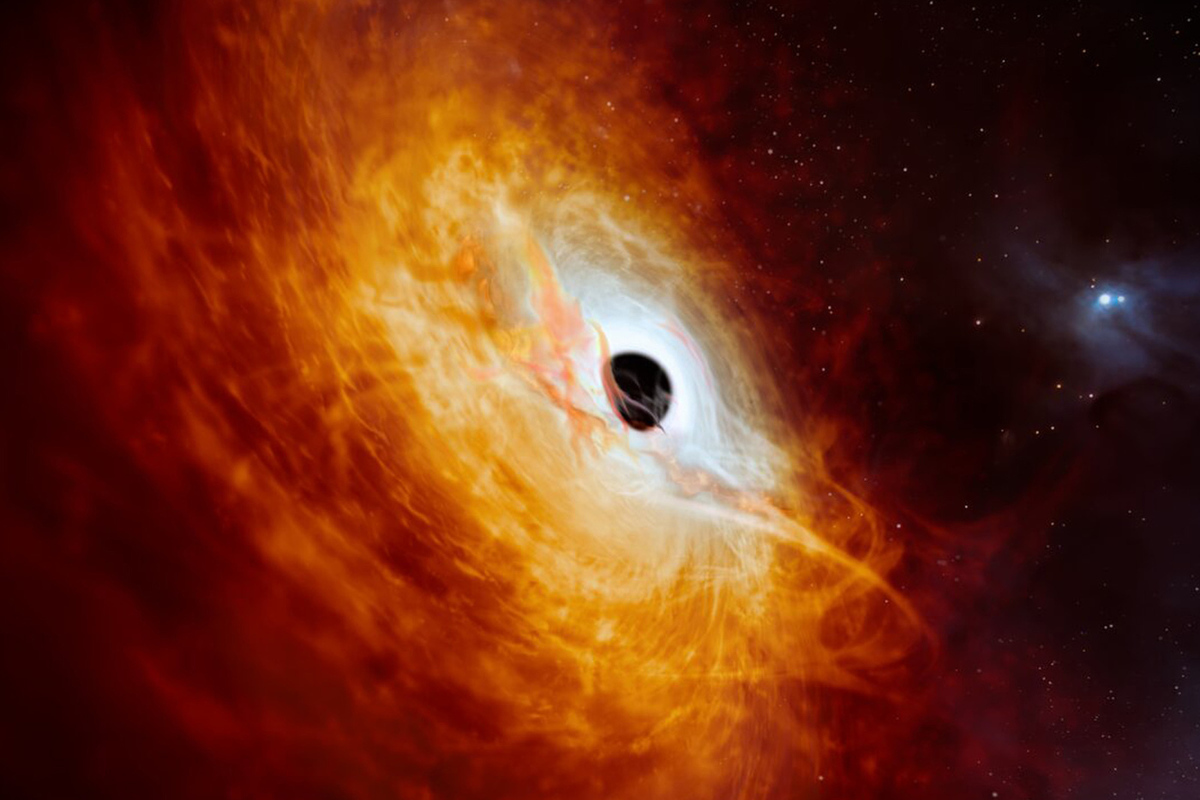Astronomers have found the brightest object in the Universe: it eats up the sun a day
[ad_1]

“Hiding in plain sight”
Astronomers have discovered the brightest object in the Universe – a quasar, powered by a black hole that eats the sun a day
The brightest known object in the universe, a quasar 500 trillion times brighter than our sun, was “hiding in plain sight,” researchers say.
According to The Guardian, Australian scientists have discovered a quasar powered by the fastest-growing black hole ever discovered. Its mass is about 17 billion times that of our solar system’s sun, and it absorbs the equivalent of the sun per day.
Light from the celestial object traveled over 12 billion years to reach Earth.
Australian National University scientists first spotted it using a 2.3-metre telescope at the university’s NSW Siding Spring Observatory in Coonabarabran. They then confirmed the find using the European Southern Observatory’s (ESO) Very Large Telescope, which has a 39-metre primary mirror.
The findings by researchers from Australia, in collaboration with ESO, the University of Melbourne and France’s Sorbonne University, were published in the journal Nature Astronomy.
Lead author, Australian National University associate professor Christian Wolf, said it was the brightest known object in the universe and that its incredible growth rate meant a “huge release of light and heat” – and that he doubted its record would ever be broken .
The light is emitted by an “accretion disk” seven light years in diameter. It is into this disk that matter is pulled into and spirals around the black hole before it crosses the event horizon.
When this material crashes into another material, it creates enormous amounts of light and heat, writes The Guardian.
“It’s like a giant magnetic storm cell with a temperature of 10,000 degrees Celsius, lightning everywhere and winds blowing at such speed that they would circle the Earth in a second,” says Christian Wolf. “This storm cell is seven light years across, which is 50% greater than the distance from our solar system to the next star in the galaxy, Alpha Centauri.”
Co-author Dr. Christopher Onken notes that it is surprising that it went undetected for so long and that it was “hiding in plain sight.”
Wolf admits that he had two different feelings about this discovery.
“On the one hand, we feel shock and awe, imagining this hellish place… imagining these conditions, and the fact that nature is actually producing something even more extreme than we previously imagined,” he said. – On the other hand, a little daring joy – we found it! Nature doesn’t make it easy, it’s like “oh, here you are!”
[ad_2]
Source link








